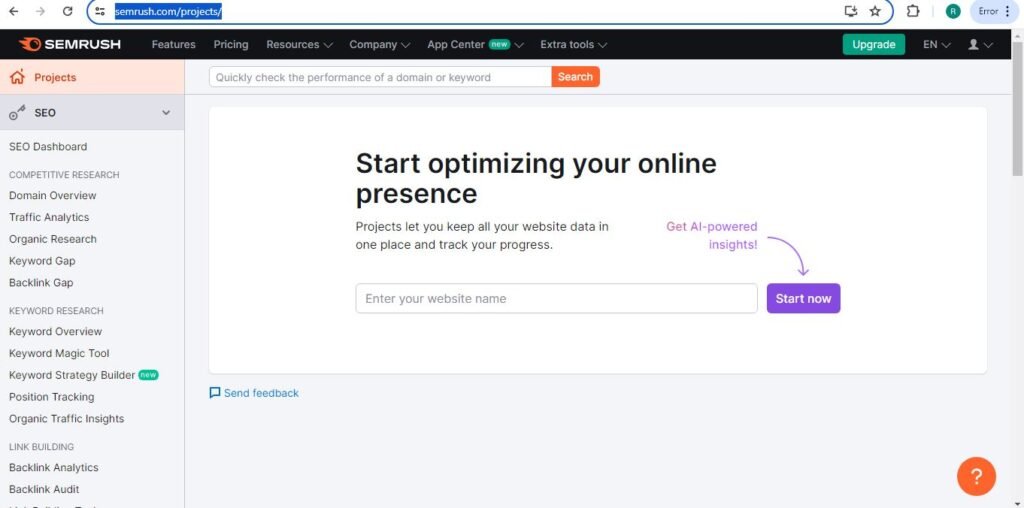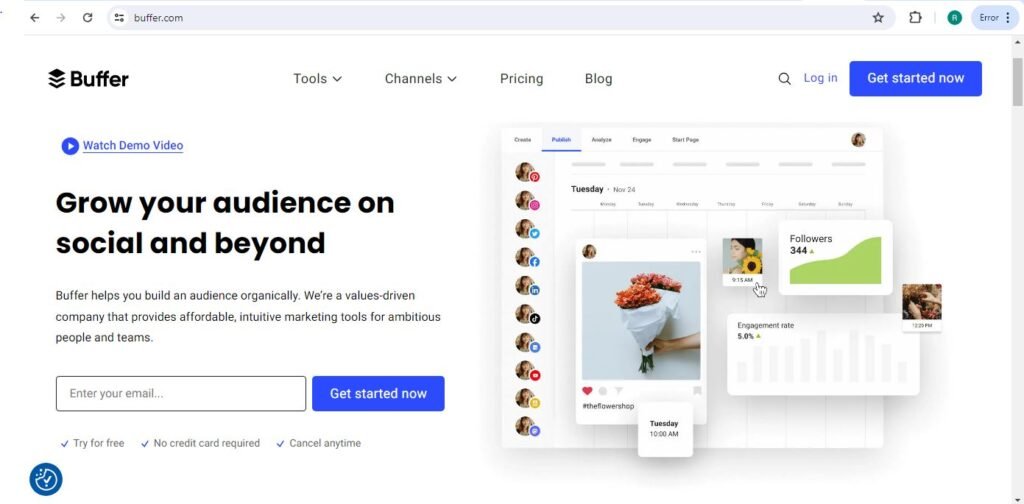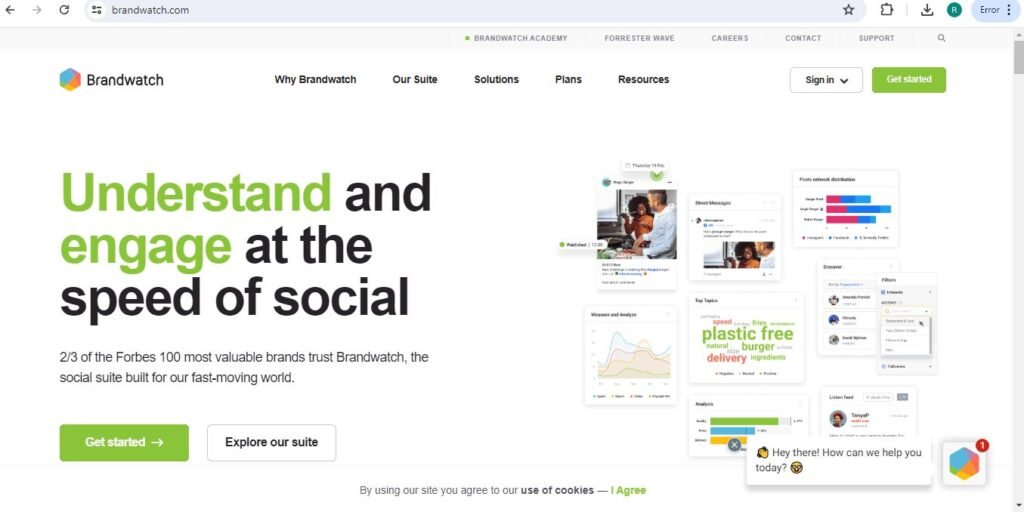Did you know that by strategically leveraging social media, you can potentially improve your website’s ranking on search engines like Google by as much as 25%?
Achieving a strong online presence for your business requires a multifaceted approach. Social media and search engine optimization (SEO) are two crucial elements, each playing a vital role in driving brand awareness, website traffic, and ultimately, increased return on investment (ROI) for organizations.
However, there is a misconception that social media activity has no direct impact on SEO rankings due to the prevalence of nofollow links. This blog post aims to dispel this myth and explore the powerful synergy between social media and SEO. We will delve into how social media activity can indirectly influence SEO through various factors, ultimately contributing to enhanced online visibility for your organization.
How Does Social Media Activity Impact SEO?
While social media links themselves may not directly influence SEO rankings due to their nofollow nature (meaning they don’t pass link authority directly), social media activity creates a ripple effect that can positively impact your website’s search engine visibility. Here’s how:
#1. Increased Brand Awareness and Social Proof: Active and engaging social media presence fosters brand recognition and establishes your organization as a thought leader in your industry.
Positive mentions and interactions on social media platforms build trust and credibility, which search engines may consider when ranking websites. Think of it as a popularity contest – a brand that is widely recognized and discussed online is likely seen as more relevant by search engines.
#2. Content Promotion and Distribution Powerhouse: Social media platforms are dynamic channels for promoting your website content. By strategically sharing valuable and informative content, you can attract a wider audience, drive website traffic, and potentially earn backlinks from other websites – a crucial factor in SEO.
Social media allows you to target your ideal audience with laser focus, ensuring your content reaches the people most likely to find it valuable and share it with their networks. This can lead to a snowball effect, increasing website traffic and potentially attracting backlinks from other websites that see your content as a credible source.
#3. Harnessing the Power of User Engagement: Social media thrives on interaction. Likes, comments, and shares on your social media posts act as a form of user engagement that search engines may view as a positive indicator of content quality and relevance. This can indirectly influence your website’s ranking and search engine visibility.
High user engagement suggests that your content is resonating with your audience and providing value. Search engines may interpret this as a signal that your website is a trustworthy source of information, potentially giving it a boost in search rankings.
#4. Long-Tail Keyword Targeting: Social media platforms are excellent for incorporating long-tail keywords, which are more specific search terms used by users. By including these keywords in your social media posts and engaging in relevant conversations, you can increase your website’s visibility for these niche searches.
Traditional SEO strategies often focus on high-volume keywords, which can be highly competitive. Social media allows you to target long-tail keywords that are more likely to convert users who are further along in the buying journey.
#5. Fresh Content Signals: Search engines favor websites that consistently publish fresh content. By regularly sharing new content on social media, you can indirectly send signals to search engines that your website is active and up-to-date. This can positively impact your website’s ranking and search engine visibility.
In essence, social media SEO is about creating a positive online ecosystem around your brand and website. By leveraging the power of social media to increase brand awareness, promote valuable content, and foster user engagement, you can indirectly influence your website’s search engine ranking and achieve a more prominent online presence.
Optimizing Your Social Media Profiles & Posts for SEO
Now that we’ve explored the ways social media activity influences SEO, let’s delve into actionable strategies to optimize your social media profiles and posts for improved search visibility.
Here’s a two-pronged approach to maximize your social media SEO efforts:
#1. Profile Optimization:
1. Usernames and Display Names: Treat your social media usernames and display names like mini-billboards. Integrate relevant keywords that potential customers might use to search for your brand or industry. This increases the chances of your profiles appearing in search results when users search for those keywords.
2. Profile Bios and Descriptions: Craft compelling bios and descriptions that are informative and keyword-rich. Briefly explain what your organization does and the value you offer. Don’t just list features; highlight the benefits your products or services provide to your target audience.
3. Profile Images and Visuals: While aesthetics matter, prioritize using high-quality visuals that are relevant to your brand and target audience. Remember to include alt text for these visuals, which is a brief description that helps visually impaired users understand the image and also allows search engines to index the content.
4. Location Tags: If your organization has a physical presence, leverage location tags on social media platforms. This allows users searching for businesses in your area to discover your profile and potentially convert into customers.
5. Call to Action: Subtly integrate calls to action (CTAs) within your profile descriptions. Encourage users to visit your website, learn more about your services, or follow you on other social media platforms.
6. Consistency is Key: Maintain consistency across all your social media profiles. Use the same usernames, logos, and branding elements to create a recognizable brand identity and improve searchability.
#2. Post Optimization:
1. Keyword Research and Integration: Conduct keyword research to identify relevant keywords that your target audience uses to search for information related to your industry. Strategically integrate these keywords throughout your social media posts, but ensure it reads naturally and doesn’t sound forced.
2. Content Strategy: The cornerstone of social media SEO lies in creating valuable and engaging content that aligns with your SEO goals and target keywords. Informative blog posts, industry insights, helpful tutorials, or entertaining infographics are all excellent content formats that can attract and engage your audience.
3. Hashtags: Hashtags are powerful tools for categorizing your content and increasing its discoverability. Utilize a mix of popular and niche hashtags relevant to your industry and target audience. However, avoid overusing hashtags, as this can appear spammy.
4. Alt Text and Image Descriptions: Don not neglect alt text for your social media images. Include concise descriptions that not only improve accessibility but also allow search engines to understand the context of your visuals.
5. Content Diversification: Experiment with different content formats to cater to diverse audience preferences. Include a healthy mix of text posts, images, videos, and live streams to keep your audience engaged.
6. Strategic Posting Times: Identify the optimal times to post on each social media platform based on your target audience’s activity. This increases the likelihood of your content being seen and interacted with, potentially boosting SEO signals.
7. Cross-Promote Your Content: Don’t limit your content to one social media platform. Share your content across various platforms to maximize reach and engagement. Additionally, consider promoting your social media content on your website to create a cohesive online presence.
8. Respond to Comments and Messages: Social media thrives on interaction. Promptly respond to comments and messages on your social media posts. This demonstrates responsiveness, builds relationships with your audience, and encourages further engagement, which can be a positive SEO factor.
9. Track and Analyze: Utilize social media analytics tools to track the performance of your content and overall social media strategy. Monitor key metrics like engagement rates, reach, and website clicks to understand what resonates with your audience and identify areas for improvement.
By implementing these tips, you can create a comprehensive social media SEO strategy that optimizes your social media profiles and posts for better search engine visibility and ultimately drives more qualified traffic to your website.
Actionable Social Media SEO Tips: Supercharge Your Online Presence
Now that you possess the knowledge to optimize your social media profiles and posts for search engines, let’s delve into some actionable tips to supercharge your online presence:
#1. Content Consistency is Paramount: In the ever-evolving social media landscape, consistency reigns supreme. Regularly publish high-quality content that aligns with your brand identity and target audience’s interests. Aim for a consistent posting schedule to keep your audience engaged and maintain a steady flow of fresh content for search engines to index.
#2. Collaboration and Influencer Marketing: Partnering with industry influencers can be a powerful social media SEO tactic. Leverage their established audience and credibility to promote your content and potentially earn valuable backlinks to your website.
This can significantly boost your brand awareness, reach a wider audience, and ultimately improve your website’s search engine ranking.
#3. Embrace Social Media Analytics: Don’t operate in the dark! Utilize the social media analytics tools offered by most platforms to gain valuable insights into your content performance. Track key metrics like engagement rates, reach, website clicks, and follower demographics. These insights will help you understand what resonates with your audience, identify areas for improvement, and refine your social media SEO strategy for optimal results.
#4. Integrate Your Website with Your Social Media: Seamless integration between your website and social media profiles creates a unified online experience for your audience. Include prominent social media buttons on your website to encourage visitors to follow you.
Conversely, incorporate website links within your social media bios and posts to direct users to relevant content on your website. This not only improves user experience but also signals to search engines that your website is a valuable resource.
#5. Stay Ahead of the Curve: The social media landscape is constantly evolving, with new trends and platforms emerging. Stay informed about the latest developments and adapt your social media SEO strategy accordingly. Experiment with new content formats, explore emerging platforms, and refine your approach based on current audience preferences and search engine algorithms.
#6. Leverage Social Listening: Social media platforms are a goldmine of customer insights. Utilize social listening tools to track brand mentions, industry conversations, and trending topics relevant to your niche.
This allows you to identify pain points, understand customer sentiment, and tailor your content strategy to address their needs. Addressing these issues through informative content positions you as a thought leader and strengthens SEO by showcasing your expertise.
#7. Run Social Media Contests and Giveaways: Who doesn’t love a good contest? Hosting interactive social media contests and giveaways can be a fun and engaging way to boost brand awareness, attract new followers, and generate user-generated content.
Encourage participants to share your content or use specific hashtags to increase reach and engagement, potentially attracting new audiences and improving SEO visibility.
#8. Utilize Social Media Polling and Q&A Sessions: Social media thrives on interaction. Host interactive polls and Q&A sessions to spark conversations with your audience.
This not only fosters engagement but also provides valuable insights into their preferences and challenges. Address their questions in informative content, establishing yourself as a reliable source and potentially ranking higher for relevant search queries.
#9. Go Live and Be Authentic: Live streaming has become a powerful social media tool. Host live sessions to showcase your expertise, conduct product demonstrations, or answer questions in real-time.
This fosters a sense of connection with your audience, builds trust, and encourages engagement, which can positively impact SEO. Additionally, live content often receives priority by some social media algorithms, further boosting your reach.
#10. Partner with Micro-Influencers: While collaborating with established influencers can be beneficial, don’t underestimate the power of micro-influencers. These individuals have a highly engaged and niche following, allowing you to target a specific audience segment more effectively.
Partner with micro-influencers relevant to your industry to promote your brand or content, potentially earning valuable backlinks and driving targeted traffic to your website.
#11. Embrace User-Generated Content (UGC): User-generated content (UGC) is a form of social proof that builds trust and authenticity. Encourage your audience to share their experiences with your brand using specific hashtags or tagging your social media profiles.
UGC can be testimonials, product reviews, or creative content featuring your brand. Share this UGC on your own social media channels, showcasing customer satisfaction and potentially attracting new audiences who resonate with the content.
By consistently implementing these actionable tips, you can transform your social media presence into a powerful SEO tool. Remember, the key lies in creating a dynamic and engaging social media ecosystem that fosters brand awareness, promotes valuable content, and encourages user interaction – all of which contribute to a more prominent online presence and ultimately drive qualified traffic to your website.
6 SEO Tools to Make Your Social Media Effective
Social media SEO goes beyond simply creating great content. Fortunately, there are numerous tools available to streamline your workflow, optimize your content for search, and track your progress. Here are 6 SEO tools to make your social media efforts more effective, with a detailed explanation of one tool from each category.
#1. Keyword Research Tool: SEMrush
\While there are many excellent keyword research tools available, SEMrush stands out for its comprehensiveness and ability to cater specifically to social media SEO needs.

Here’s a closer look at how SEMrush can empower your social media SEO strategy:
#1. Uncover Relevant Keywords: SEMrush goes beyond basic search volume data. It provides insights into keyword difficulty, search intent (informational, transactional, etc.), and related keywords. This allows you to identify not only high-volume keywords but also those that align with your audience’s search intent on social media platforms.
#2. Analyze Competitor Strategies: Gain valuable intel on your competitors’ social media presence. SEMrush allows you to see their top-performing social media content, the keywords they are targeting, and their audience demographics. This information can inspire content ideas, help you identify potential content gaps, and ensure your social media SEO strategy is competitive.
#3. Social Media Listening: While not exclusive to keyword research, SEMrush offers social media listening capabilities. Track brand mentions, industry conversations, and trending topics relevant to your niche. This allows you to identify pain points your audience faces, understand current social media trends, and tailor your content strategy to address their needs, potentially improving your social media SEO by creating highly relevant and engaging content.
#4. Content Topic Research: Running out of content ideas? SEMrush’s topic research tool can help. It analyzes top-performing content within your industry and provides insights into potential content themes, titles, and outlines. This ensures your content aligns with search intent and user interest, potentially improving your social media reach and engagement.
By leveraging SEMrush’s comprehensive keyword research capabilities, you can gain a deeper understanding of your audience’s search intent on social media platforms, identify target keywords, and craft content that resonates with your audience and ranks higher in search results.
#2. Social Media Management Platform: Buffer

Managing multiple social media profiles can be time-consuming. Here’s how Buffer streamlines your workflow and empowers your social media SEO strategy:
#1. Schedule and Publish Content: Plan your social media content calendar in advance and schedule posts across various platforms effortlessly. This ensures consistent content flow, keeps your audience engaged, and allows you to focus on creating high-quality content rather than managing multiple platforms on the fly.
#2. Optimize Posts for Each Platform: Buffer allows you to tailor your social media posts for each platform’s specific requirements. For example, you can adjust character limits, optimize image sizes, and schedule posts for optimal engagement times on each platform. This ensures your content is presented effectively and reaches the right audience at the right time.
#3. Built-in Analytics: Gain valuable insights into your social media performance directly within Buffer. Track key metrics like reach, engagement rates, clicks, and website traffic to understand what resonates with your audience and identify areas for improvement. This data is crucial for refining your social media SEO strategy and ensuring your content is optimized for search engine algorithms.
#4. Simplify Team Collaboration: For larger teams or agencies, Buffer offers collaboration features that streamline content creation and approval workflows. This ensures everyone is on the same page, simplifies social media management, and allows you to focus on delivering high-quality content that drives SEO results.
By leveraging Buffer’s scheduling, optimization, and analytics tools, you can streamline your social media workflow, ensure consistent brand messaging across platforms, and gain valuable data to continuously optimize your social media SEO strategy for long-term success.
#3. Social Listening Tool: Brandwatch

Social media SEO goes beyond just creating content; it’s about understanding your audience and the conversations happening within your industry. Brandwatch is a powerful social listening tool that empowers you to do just that:
#1. Track Brand Mentions and Industry Conversations: Monitor how your brand is being mentioned across social media platforms, online forums, and news articles. This allows you to identify areas where you can improve customer sentiment, address potential issues promptly, and participate in relevant industry conversations to establish brand authority.
#2. Analyze Audience Demographics and Interests: Gain valuable insights into your audience demographics, interests, and pain points. Brandwatch helps you understand who your audience is, what they care about, and the language they use. This allows you to tailor your social media content to resonate with their specific needs and interests, potentially improving engagement and SEO by creating content that directly addresses their search intent.
#3. Identify Influencers and Brand Advocates: Discover influential voices within your industry who are mentioning your brand or relevant topics. Brandwatch can help you identify potential partners for collaborations or influencer marketing campaigns, allowing you to leverage their established audience to reach a wider audience and potentially boost your social media SEO through increased brand awareness and content reach.
#4. Track Sentiment Analysis: Social media conversations aren’t always positive. Brandwatch provides sentiment analysis tools that help you understand the overall sentiment surrounding your brand and industry discussions.
This allows you to address negative sentiment promptly, identify areas for improvement, and refine your brand messaging to create a more positive brand image, potentially leading to increased trust and engagement, which can be positive SEO signals.
By leveraging Brandwatch’s social listening capabilities, you can gain a deeper understanding of your audience, identify industry trends, and tailor your social media SEO strategy to create content that resonates with your target audience and positions you as a thought leader within your niche.
#4. Social Media Analytics and Reporting Tool: Facebook Insights
While most social media platforms offer built-in analytics tools, Facebook Insights deserves special mention for its comprehensiveness, particularly for brands with a strong presence on Facebook. Here’s how Facebook Insights can elevate your social media SEO efforts:
#1. Track Key Performance Indicators (KPIs): Gain detailed insights into key metrics like reach, engagement rates, clicks, website traffic, and video views for your Facebook content. This allows you to understand what content resonates with your audience, identify areas for improvement, and measure the effectiveness of your social media SEO strategy in driving traffic to your website.
#2. Audience Demographics: Facebook Insights provides in-depth data on your audience demographics, such as age, location, interests, and occupations. This allows you to tailor your social media content to resonate with your target audience and ensure your SEO efforts are focused on the right keywords and topics relevant to their search intent.
#3. Content Performance Comparison: Compare the performance of different types of content, such as images, videos, or live streams. This helps you identify the content formats that generate the most engagement and reach, allowing you to refine your content strategy to maximize SEO impact by focusing on formats that keep your audience engaged and potentially improve search engine ranking through user interaction.
#4. Track Conversions and Website Traffic: Facebook Insights allows you to track how your social media activity translates into website traffic and conversions (e.g., email signups or purchases). This data is crucial for understanding the return on investment (ROI) of your social media SEO efforts and measuring the effectiveness of your content in driving valuable website traffic.
By leveraging Facebook Insights and similar analytics tools offered by other platforms, you can gain a data-driven understanding of your social media performance and continuously refine your social media SEO strategy to achieve your business goals.
Remember, these are just a few examples of the many social media SEO tools available. Explore different options and identify the ones that best suit your specific needs and budget to empower your social media SEO journey.
#5. Hashtag Research Tool: RiteTag

Hashtags are powerful tools for categorizing your content and increasing its discoverability in social media searches. However, using the right hashtags is crucial. RiteTag is a valuable tool that helps you identify the most effective hashtags for your social media content:
#1. Discover Relevant Hashtags: Enter a seed keyword or topic related to your content, and RiteTag suggests relevant hashtags along with key metrics like search volume, competition level, and trending status. This allows you to identify hashtags that are popular yet not oversaturated, ensuring your content reaches a targeted audience without getting lost in the noise.
#2. Analyze Hashtag Performance: RiteTag allows you to analyze the performance of existing hashtags. See how often a hashtag is used, the type of content it’s associated with, and the demographics of the audience using it. This data helps you understand the reach and audience you can potentially tap into by using specific hashtags, ensuring your social media SEO efforts target the right audience.
#3. Identify Real-Time Trending Hashtags: Stay on top of current trends with RiteTag’s real-time trending hashtag feature. Capitalize on trending topics and conversations by incorporating relevant hashtags into your content, potentially boosting your reach and engagement during peak search times for those trending topics.
#4. Track Hashtag Performance Over Time: Monitor the performance of the hashtags you use over time. See how their search volume and competition level fluctuate, and adjust your hashtag strategy accordingly. This ensures you’re leveraging the most effective hashtags for your content and maximizing your social media SEO reach.
By using RiteTag to identify and leverage relevant hashtags, you can ensure your social media content reaches the right audience, sparks conversation, and potentially improves your search engine ranking through increased user engagement with your content.
#6. Social Media Competitive Analysis Tool: Similarweb

Understanding your competitors’ social media strategies can provide valuable insights to inform your own approach. Similarweb offers a comprehensive social media competitive analysis tool:
#1. Analyze Competitor Strategies: Gain insights into your competitors’ social media presence across various platforms. See their top-performing content, audience demographics, and engagement metrics.
#2. Identify Content Gaps: By analyzing competitor content, you can identify potential gaps in your own strategy. This allows you to create content that addresses topics your competitors haven’t explored, potentially attracting new audiences and establishing yourself as a thought leader within your niche.
#3. Benchmark Your Performance: Compare your social media performance metrics like reach, engagement, and website traffic against your competitors. This helps you identify areas where you excel or need improvement, allowing you to continuously refine your social media SEO strategy to stay ahead of the competition.
#4. Discover Potential Collaborations: Similarweb can reveal potential collaborators within your industry. Identify brands or influencers with overlapping audiences but non-competing products or services. This opens doors for potential collaborations that can leverage each other’s audience reach and boost your social media SEO by expanding your online presence.
By leveraging Similarweb’s social media competitive analysis tools, you can gain valuable insights into your competitors’ strategies, identify content gaps to fill, and refine your social media SEO approach to stay ahead of the curve and achieve your online marketing goals.
In conclusion, these six SEO tools represent a powerful arsenal to optimize your social media presence, enhance your content strategy, and ultimately achieve long-term success with your social media SEO efforts. Remember, the key lies in choosing the tools that best suit your specific needs and budget, and using them to gain data-driven insights that fuel continuous improvement within your social media SEO strategy.
10 Social Media SEO Mistakes and How to Avoid Them
The ever-evolving social media landscape can be tricky to navigate. Here are 10 common social media SEO mistakes and how to avoid them:
#1. Neglecting Keyword Research: Skipping keyword research can lead to creating content that resonates with a limited audience and fails to rank well in search results. Always conduct thorough keyword research to understand your target audience’s search intent and integrate relevant keywords naturally into your social media profiles and content.
#2. Inconsistent Posting: Social media thrives on consistency. Just like your favorite TV show, your audience craves a predictable flow of fresh content to keep them engaged. Falling off the grid, even for a short period, can lead to a decline in engagement and ultimately hinder your SEO efforts.
Fortunately, numerous tools can help you develop and maintain a consistent social media posting schedule. As discussed earlier, Buffer excels at scheduling and publishing content. Plan your social media calendar in advance, schedule posts across various platforms, and ensure a steady flow of content keeps your audience engaged and search engines aware of your brand.
Analyze your competitors’ posting habits. How often do they typically post? What days and times do they seem to generate the most engagement? Leverage Similarweb’s insights to inform your own posting schedule and identify potential gaps where you can establish consistent content delivery.
Track your content performance over time. See which days and times your audience is most active, and tailor your posting schedule accordingly. Consistency doesn’t just mean posting frequently; it means posting when your audience is most receptive.
#3. Inauthentic Hashtags: Don’t stuff your posts with irrelevant hashtags just to appear trendy. This can appear spammy and alienate your audience. Use relevant and targeted hashtags that accurately reflect your content and industry to improve discoverability without compromising authenticity.
#4. Ignoring Social Media Analytics: Data is your friend! Failing to track your social media analytics deprives you of valuable insights into what content resonates with your audience and what needs improvement. Utilize analytics tools to understand your audience demographics, engagement metrics, and content performance. This data is crucial for refining your social media SEO strategy and creating content that gets noticed in search results.
#5. Forgetting Visuals: Visuals are powerful tools for grabbing attention and boosting engagement. Don’t rely solely on text-based posts. Incorporate high-quality images, infographics, or videos into your social media content to break up text, improve visual appeal, and improve visual appeal, and potentially increase shares, which can indirectly signal positive SEO factors to search engines.
Remember to use descriptive alt text for your visuals, as this not only improves accessibility but also helps search engines understand the context of your content.
#6. Neglecting Mobile Optimization: With the majority of social media consumption happening on mobile devices, it’s crucial to ensure your social media profiles and content are mobile-friendly.
Use clear and concise language, optimize image sizes for faster loading, and consider creating mobile-specific content formats like short-form videos to cater to on-the-go audiences and improve overall user experience.
#7. Not Engaging with Your Audience: Social media is a two-way street. Don’t just broadcast content – actively engage with your audience. Respond to comments and messages promptly, participate in relevant conversations, and encourage audience participation through polls, Q&A sessions, or contests.
This fosters a sense of community, builds trust with your audience, and indirectly improves SEO by potentially boosting engagement metrics that search engines may consider.
#8. Overlooking Social Media Contests and Giveaways: Hosting interactive social media contests and giveaways can be a fun and engaging way to boost brand awareness, attract new followers, and generate user-generated content.
Encourage participants to share your content or use specific hashtags to increase reach and engagement, potentially attracting new audiences who resonate with the content and improving SEO visibility. However, make sure your contests comply with the respective social media platform’s terms of service.
#9. Failing to Integrate Your Website: Create a seamless online experience for your audience. Include prominent social media buttons on your website to encourage visitors to follow you. Conversely, incorporate website links within your social media bios and posts to direct users to relevant content on your website. This not only improves user experience but also signals to search engines that your website is a valuable resource.
#10. Not Adapting to Algorithm Changes: Social media algorithms are constantly evolving. Stay informed about the latest social media trends and adapt your social media SEO strategy accordingly.
Experiment with new content formats, explore emerging platforms, and refine your approach based on current audience preferences and search engine algorithms. Remember, social media SEO is an ongoing process – stay agile and adapt to ensure your brand maintains a prominent position in the ever-changing digital landscape.
By avoiding these common mistakes and implementing the best practices outlined throughout this blog post, you can navigate the social media SEO landscape with confidence and cultivate a thriving online presence that drives qualified traffic to your website.
5 Best Social Media SEO Courses for Personal Development
Social media SEO is a valuable skill set that can benefit not only businesses but also individuals seeking to build a strong personal brand or establish themselves as thought leaders in their field. Here are 5 online courses to enhance your personal development in social media SEO:
#1. The Social Media Marketing Course by HubSpot Academy: This free course from HubSpot Academy provides a comprehensive overview of social media marketing fundamentals, including content creation, strategy development, and social media advertising. While not specifically focused on SEO, the course lays a strong foundation for understanding social media best practices that can be applied to enhance your social media SEO efforts.
#2. Social Media Marketing Specialization by Coursera (Paid): Offered by various universities and industry experts, this Coursera specialization delves deeper into social media marketing strategies across various platforms, including Facebook, Twitter, and Instagram. It covers topics like social media analytics, community management, and content marketing, equipping you with the skills to create and manage effective social media campaigns that can be optimized for search engines.
#3. Social Media SEO: How to Rank Higher on Social Media & Google by Udemy (Paid): This Udemy course specifically focuses on social media SEO strategies. Learn how to optimize your social media profiles and content for search engines, leverage social listening tools for audience insights, and track your social media SEO performance. This course is ideal for individuals seeking a targeted approach to mastering social media SEO to amplify their online presence.
#4. Moz Beginner’s Guide to SEO (Free): While not directly focused on social media, this free guide from Moz, a leading SEO authority, provides a strong foundation in search engine optimization principles. Understanding these principles will empower you to better integrate SEO best practices into your social media strategy, ultimately enhancing your search engine visibility.
#5. Social Media Today (Free & Paid Resources): Social Media Today is a valuable resource for staying updated on the latest social media trends, industry news, and best practices. They offer a mix of free and paid resources, including webinars, articles, and ebooks, covering various aspects of social media marketing, including social media SEO.
Benefits of Social Media SEO Courses for Personal Development
#1. Build a Strong Personal Brand: By mastering social media SEO, you can create high-quality content that positions you as an expert in your field. This attracts a targeted audience, fosters engagement, and establishes you as a thought leader within your industry or niche.
#2. Increase Your Visibility: Social media SEO helps you leverage the power of social media platforms to improve your search engine ranking. This increases your online visibility, making it easier for potential employers, collaborators, or clients to discover you.
#3. Expand Your Network: Effective social media SEO strategies encourage audience interaction and participation. This allows you to connect with like-minded individuals, build meaningful relationships within your field, and potentially discover new opportunities.
#4. Develop Valuable Skills: Social media SEO encompasses various skill sets like keyword research, content creation, data analysis, and community management. These skills are highly sought-after in today’s digital marketing landscape and can empower you to pursue freelance opportunities or enhance your professional portfolio.
#5. Stay Ahead of the Curve: The social media landscape is constantly evolving. Taking online courses allows you to stay informed about the latest social media trends and search engine algorithms. This ensures your approach remains relevant and effective in maximizing your online presence.
Investing in your personal development through social media SEO courses can be a game-changer. These courses equip you with the knowledge and skills to navigate the dynamic world of social media, build a strong online presence, and establish yourself as a thought leader within your chosen field.
Social media SEO is an ongoing journey – embrace continuous learning, refine your approach, and leverage the power of social media to achieve your personal branding goals in the ever-evolving digital landscape.
Conclusion
Congratulations! You have come to the end of this insightful journey. Social media SEO is not simply about garnering likes and shares; it is a strategic approach to cultivating a thriving online ecosystem that elevates your website’s visibility and attracts valuable traffic. This guide has equipped you with the knowledge and resources to embark on your social media SEO journey. Here’s a recap of the key takeaways:
Social media SEO indirectly impacts website ranking through brand awareness, content promotion, and user engagement. These factors can positively influence search engine algorithms.
Optimize your social media profiles and posts with relevant keywords, informative bios, and high-quality visuals with descriptive alt text.
Embrace a data-driven approach by utilizing keyword research, social media analytics, and competitor analysis tools to refine your content strategy and maximize SEO impact.
Consistency is key. Regularly publish high-quality content aligned with your brand identity and target audience’s interests. Maintain a consistent posting schedule to keep your audience engaged and search engines aware of fresh content.
Leverage the power of collaboration. Partner with influencers, participate in relevant conversations, and explore opportunities for social media contests or giveaways. This fosters engagement, expands reach, and potentially improves SEO through user interaction.
Don’t forget the power of visuals. Incorporate high-quality images, infographics, or videos to break up text, enhance visual appeal, and potentially increase shares – all of which can indirectly signal positive SEO factors.
Beyond these core principles, explore the vast array of SEO tools available. From keyword research and social listening to content scheduling and competitive analysis, these tools empower you to streamline your workflow, optimize your content for search, and track your progress.
Remember, social media SEO is an ongoing journey. Stay informed about industry trends, adapt your approach based on current audience preferences and search engine algorithms, and leverage the power of social media to achieve long-term success in today’s ever-evolving digital landscape.
By putting the knowledge and strategies outlined in this guide into practice, you can transform your social media presence into a powerful SEO tool that propels your brand to new heights. Embrace the power of social media SEO, cultivate a thriving online community, and watch your website attract the qualified traffic it deserves.










